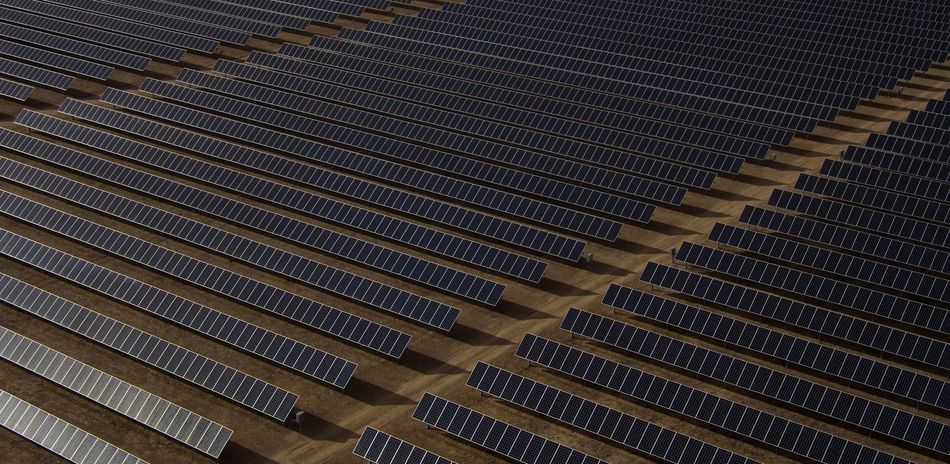Quantum Computing and Energy Optimization: A Future Beyond Moore's Law
Article #3 of Engineering the Quantum Future Series: Quantum computing advances energy optimization by enabling real-time grid management, precise simulation, optimization of energy systems, and facilitating the integration of renewable sources.
This is the third article in a six-part series featuring articles on "Engineering the Quantum Future". The series explains the revolutionary advancements in quantum computing and their implications for various industries. Each article discusses a specific aspect of this transformative technology, from the fundamental concepts of quantum computing to the practical applications and challenges. This series is sponsored by Mouser Electronics. Through the sponsorship, Mouser Electronics promotes innovation and the exchange of knowledge, aiming to harness the revolutionary capabilities of quantum computing for a smarter and safer technological future.
Introduction
In a world where the race to net-zero emissions is juxtaposed with the slowing cadence of Moore's law, quantum computing emerges as a ray of hope. While renewable energy sources like solar and wind power are making enormous strides, most of our energy still hinges on fossil fuels.
This article examines the significant role quantum computing could have in enhancing energy efficiency and developing new technologies. We will cover its impact on improving solar cells and batteries and its ability to optimize energy use broadly. Expect a discussion on how quantum computing offers technological advancements and contributes to sustainable energy practices, along with an overview of the current challenges and potential applications within this innovative tech sector.
Quantum Computing Accelerating Developments in Sustainability
The challenges of political dynamics, economic fluctuations, and the limitations of classical Von Neumann computing have often been roadblocks. However, the dawn of quantum systems promises a transformative shift. These systems have the potential not only to rejuvenate the waning Moore's law but also to revolutionize the way we harness and optimize energy. From developing efficient solar cells and batteries to optimizing energy consumption in homes and businesses, quantum computing is all set to play a key role in our journey toward a sustainable future.
Harnessing the unparalleled power of quantum bits that can represent multiple states simultaneously, quantum systems offer a level of parallelism that conventional computers can only dream of. Thus, tasks like simulating molecular dynamics for advanced semiconductor processes or optimizing energy consumption across millions of endpoints can be achieved in mere milliseconds. As we delve deeper, we'll explore how quantum computing is not just an upgrade in computational power but a paradigm shift that can redefine our approach to energy optimization and sustainability.
Let’s explore how quantum systems can help us build a greener, more sustainable future by supercharging a waning Moore's law and bringing in a new era of near-instantaneous computing.
Quantum Leaping Moore's Law
For decades, the tech world rode the wave of Moore's law, witnessing a consistent doubling of transistors in microchips and a subsequent explosion of computing power roughly every two years. Yet, as we approach the boundaries of nanometer scaling and transition toward angstrom-level scaling, the once-steady rhythm of Moore's law shows signs of faltering. Enter quantum computing, which holds the potential to redefine these boundaries.
In the twilight of Moore's law, quantum systems emerge as game changers. Sidestepping the constraints of traditional Von Neumann architectures, they promise to tackle intricate problems in moments—tasks that even today's supercomputers might need decades to resolve. At the heart of quantum systems lie quantum bits, or qubits. Unlike the binary bits of classical computers that represent either 0 or 1, qubits can simultaneously embody both values through superposition. This unique trait, coupled with the phenomenon of entanglement, unlocks unparalleled parallelism and opens doors to myriad applications.
For example, with incredible computing power, quantum systems can help semiconductor fabrication plants run advanced algorithms that simulate and optimize molecular dynamics, nanoelectronics, and nanomaterials on the most advanced processes (i.e., lowest nanometer). Chip designers can also leverage quantum systems to achieve optimal power, performance, and area (PPA) while eliminating electrostatic discharge (ESD) and effectively dissipating excess heat.
Hand in hand with quantum advancements, nanotechnology paves the way for precise crafting and control of qubits and their associated devices. From quantum dots and nanowires to nanophotonic circuits, the synergy promises unprecedented precision at the most intricate scales. Using ion implantation, scientists have already achieved one-qubit operation fidelity of up to 99.95 percent and two-qubit fidelity of 99.37 percent with a silicon-based three-qubit system comprising an electron and two phosphorus atoms.[1]
The Quantum-Energy Nexus: Why It Matters
While still nascent, quantum technology's footprint is already evident across diverse scientific domains, from physics and chemistry to economics and communications. But its implications for energy optimization stand out, starting a new era of efficiency and innovation. Indeed, researchers at the National Renewable Energy Laboratory (NREL) and Atom Computing recently introduced an innovative open-source interface that enables quantum computers to interact with power grid infrastructure.[2]
According to NREL engineer Sayonsom Chanda, conventional computers aren't designed to handle the exponential scale-up in parameters that the energy industry anticipates over the next two decades.
Notes Chanda, "We’re talking millions of inputs and outputs. That’s when classical computers start showing their limits, and quantum computers their benefits."
As Chanda explains, every electric vehicle, home appliance, and sensor represents a potential variable. While the interaction, coevolution, and optimization of these variables are far too complex for conventional systems to model accurately, quantum systems can quickly determine the outcome of even the most complicated scenarios in mere milliseconds.
Given this backdrop, institutions like NREL anticipate quantum computing to be the key solution for energy sector conundrums. Whether it's swiftly parsing data from countless endpoints, hastening system recoveries post faults, or fortifying inter-device communications, the quantum realm holds the answers. Additional areas where quantum computing is likely to play a crucial role include the following:
Simulations: The energy sector depends on complex simulations to develop new types of solar cells, wind generators, and geothermal equipment. Simulations also play a significant role in helping energy companies analyze geological data for oil, gas, and mineral exploration. Although conventional computers may take weeks or even months to run these simulations, quantum computers, with their incredible parallel processing capabilities, can reduce this time to seconds.
- Smart grid management: Managing power grids across geographies has become more challenging with the rise of renewable energy sources, extreme weather, and peak usage overloads. Quantum computers can help intelligently optimize energy distribution in real-time, ensuring electricity is reliably delivered where and when it's needed most.

Material discovery: Identifying new materials that efficiently store energy or conduct electricity with minimal loss is important for a sustainable and greener future. Quantum computers can speed up the discovery process by instantaneously analyzing the properties of countless materials.
Modeling catalytic reactions: Scientists have proposed converting CO2 into useful chemical products to mitigate greenhouse gas emissions. Although modeling CO2 interactions with large, complex structures such as nanoparticle catalysts is an extremely time-consuming process, quantum systems can precisely infer model reaction mechanisms in milliseconds.
Sensors: High-performance sensors are used extensively throughout the energy sector for applications such as pipeline integrity, greenhouse gas monitoring, resource discovery, and grid monitoring. One emerging application of quantum computational techniques is the optimization of sensing platforms.
Navigating the Quantum Landscape: Challenges and Prospects
Quantum computing, with its transformative potential, doesn't come without its challenges, especially when applied to the intricate field of energy optimization.
To be sure, maintaining qubits in a state of superposition requires extremely low temperatures, often close to absolute zero. Error rates are also currently higher in quantum computations compared to classical ones. Moreover, building scalable quantum systems with interconnected processors that can outperform conventional computers in practical tasks (a point often referred to as "quantum supremacy") is still a work in progress.

Amphenol Times Microwave Systems MaxGain®: Pioneering Flexibility in Microwave Coaxial Cables Amphenol's MaxGain® Flexible Microwave Coaxial Cables, offering exceptional flexibility and low loss up to 40GHz, cater to a range of demanding applications
Amphenol's MaxGain® Flexible Microwave Coaxial Cables, offering exceptional flexibility and low loss up to 40GHz, cater to a range of demanding applications
Amphenol Times Microwave Systems' MaxGain® Flexible Microwave Coaxial Cables are designed for optimal performance in environments requiring high flexibility and durability. Featuring stainless steel connectors and spiral outer conductor technology, these cables provide a low minimum bend radius and lightweight design. They offer a frequency range of DC to 40GHz, ensuring low insertion loss and excellent stability over flexure. Available in various precision interfaces such as Type N, TNC SMA, and more, MaxGain® is ideal for applications demanding low loss and consistent performance through repeated flexing.
Conclusion
Quantum computing represents a significant leap in advancing energy efficiency and sustainability. This technology enables unprecedented calculations and optimizations in energy systems, from enhancing renewable energy technologies to improving grid management and material discovery. By harnessing quantum computing, we can accelerate our progress towards sustainable energy solutions, ensuring a future where energy is cleaner and more effectively managed and utilized.
This article was initially published in "METHODS: Engineering the Quantum Future," an e-magazine by Mouser Electronics. It has been substantially edited by the Wevolver team and Ravi Y Rao. It's the third article in the Engineering the Quantum Future Series. Upcoming articles will introduce readers to more trends and technologies transforming quantum computing.
The introductory article explores the current state of quantum computing, highlighting its challenges and potential
The first article dives into the foundational concepts of quantum computing, covering its theoretical basis, technological evolution, and potential applications
The second article takes a look at some transformative breakthroughs in quantum computing
The third article examines the role of quantum computing in enhancing energy efficiency
The fourth article explains quantum interconnectivity, detailing how linking quantum processors can amplify computing power
The fifth article addresses how the advancements in quantum capabilities pose significant challenges to traditional encryption methods and cybersecurity
The sixth article discusses the technical and ethical challenges of quantum computing as the technology progresses
References
[1] M.T. Mądzik, S. Asaad, A. Youssry, et al. "Precision Tomography of a Three-Qubit Donor Quantum Processor in Silicon." Nature 601, 348–353 (2022). https://doi.org/10.1038/s41586-021-04292-7
[2] Connor O’Neil, “Quantum Computers Can Now Interface with Power Grid Equipment,” National Renewable Energy Laboratory, July 17, 2023, https://www.nrel.gov/news/program/2023/quantum-computers-can-now-interface-with-power-grid-equipment.html.

